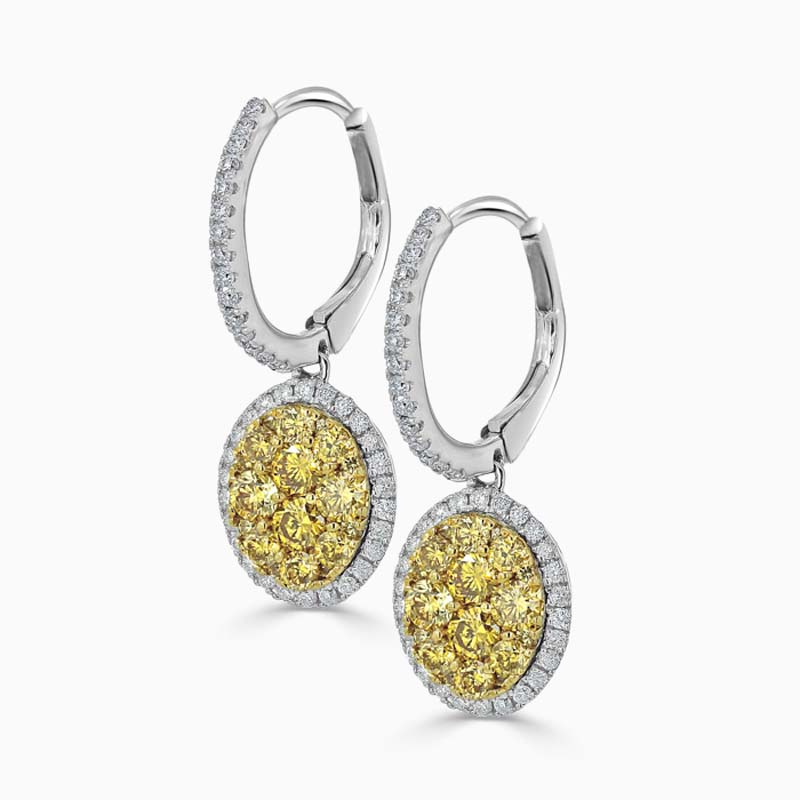If you haven’t already jumped on the trend, you might have noticed constellation ear piercings are huge right now – literally taking over our Instagram feeds.
For those who’ve heard the buzz word but aren’t quite sure what constellation piercings are, fine jewellery experts at Steven Stone are about to give you the ultimate low-down on the trend, to help you find the perfect style for you.
So, what are constellation piercings?
Constellation piercings are a group of multiple piercings that are placed to create unique patterns and stacks on your ear. These are referred to as constellations, as they look like star constellations in the sky.
Most of the time, the placements of the piercings are carefully planned, and the type of jewellery used is arranged in a specific way to create this desired look. You can use a a range of stud and hoop earrings, or opt for a more minimal look.
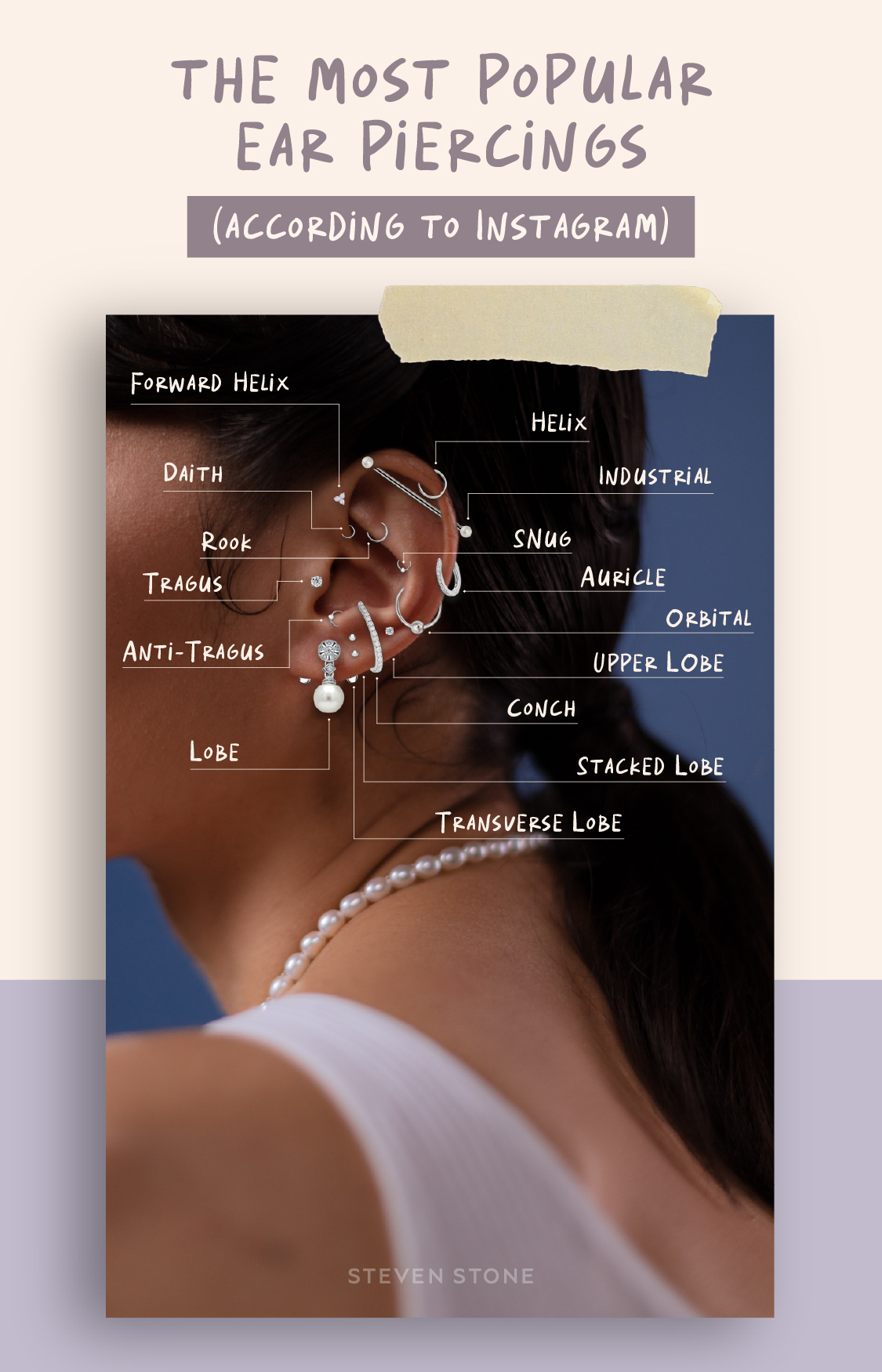
How popular are constellation piercings?
There are over 14,100 average monthly searches for the term ‘constellation piercings’, not to mention over 2 million Instagram hashtags. But what are the different parts of the ear called? And which piercings are the most popular?
To find out, we used Instagram data to uncover the most hash-tagged ear piercings.
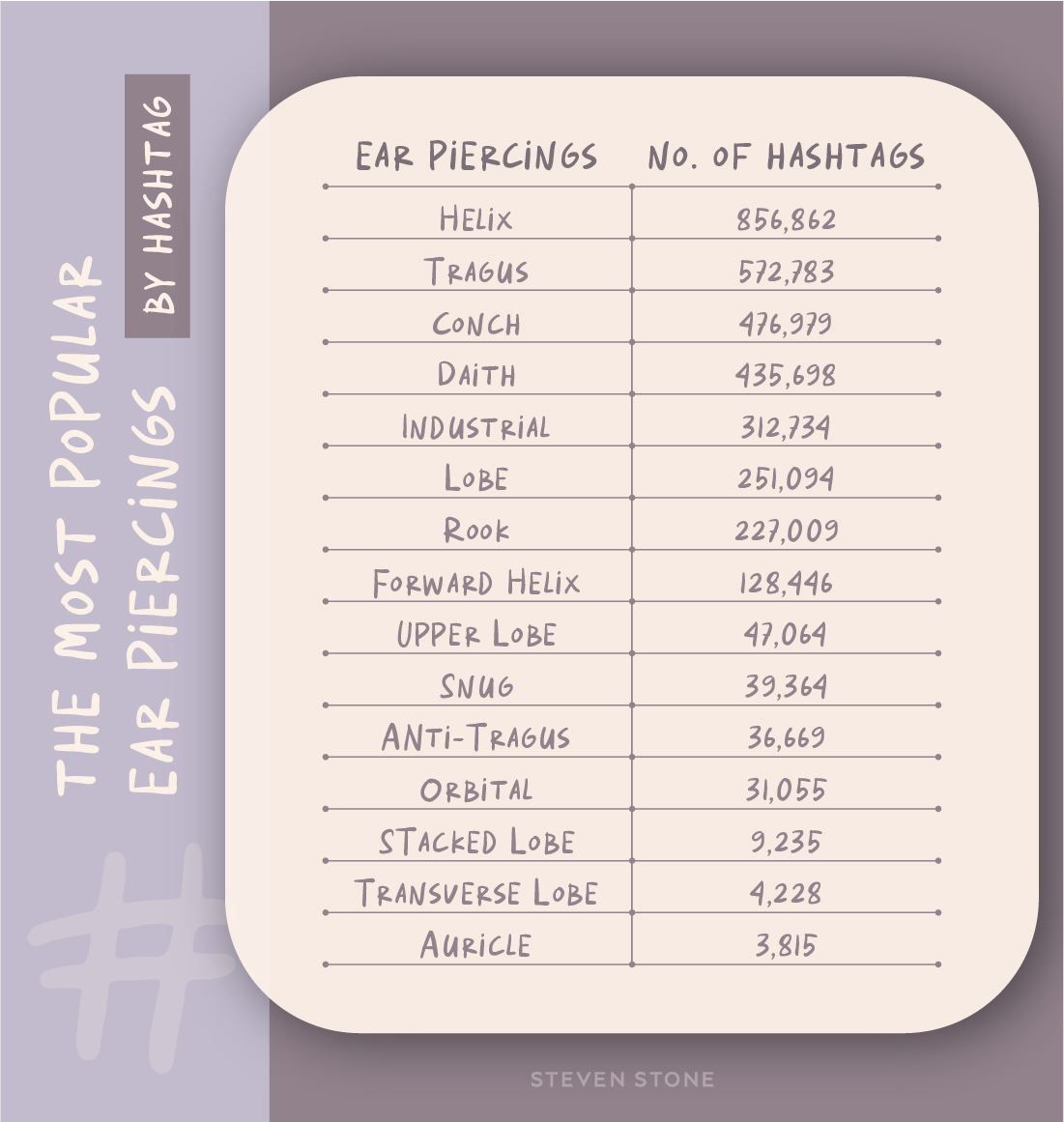
Helix
With over 850,000 hashtags, the helix, a piercing made to the upper cartilage of the ear, is the most popular overall. However, there are different kinds of helix piercings. A standard helix piercing is made in the outer upper cartilage, but you can also get forward, backward, double or even triple helix piercings.
While the classic helix style involves piercing the upper outer cartilage once, if you have two or three piercings in the same spot, just above each other, these are called double and triple helix piercings. They’re the same piercing, this is more a reference to the number you have on the same ear.
A forward helix piercing is placed on the outer, upper cartilage closest to your face by being pierced through the forward-facing surface directly above the tragus. This is one of the most popular types of helix piercings, reigning in over 128,000 hashtags. Delicate and dainty, this piercing is perfect for those who want a smaller piercing that makes a huge statement.
Tragus
The tragus is the small piece of cartilage over the entrance to the ear canal, and is the second most popular piercing on Instagram. You may have also heard of a surface tragus piercing, which is placed in the same area as the tragus piercing, except rather than puncturing the cartilage, just the skin is pierced. However, according to the association of professional piercers, because the jewellery lies beneath the skin, there may be a higher probability of the body rejecting it, deeming it a foreign object that needs to be pushed out.
Small, dainty, studs are the most popular option for tragus piercings, as the area is normally tiny. A ball stud, which has smooth edges that are less likely to snag on hair and clothing, is ideal for a new piercing, until it fully heals.

Conch
The conch piercing is another cartilage piercing which creates the opportunity to rock another gorgeous earring. The name comes from the ‘conch’ shell, as that part of the ear holds a similar appearance to a shell. There are two kinds of conch piercings, which are the inner and outer conch.
The inner conch is that cup-shaped area just beside the ear canal, in the centre of the ear, while the outer conch is the flat piece of the ear between the helix and the antihelix. There are 25,800 for ‘inner conch’ piercings, making them more popular than outer conch, which has 13,100.
Like all piercings, the Conch Piercing is going to be a little uncomfortable, however, it is no different from most cartilage piercings, which are a little more painful than a lobe piercing, but still bearable. Experts have given this a 4 out of 10 on the pain scale.
Daith
With over 400,000 hashtags the daith piercing is very popular with Instagrammers. Daith piercings are located in the inner fold of your ear cartilage, slightly above your ear canal. Not only do they look fabulus, but daith piercings are also thought to help relieve migraines by activating a soothing pressure point on the ear. Acupressure and acupuncture practitioners often pin point the daith area to treat ailments like migraines, tension, and cluster headaches, however there’s no scientific evidence to back this, just yet.
Not everyone can have a daith piercing, however, as the smaller your cartilage is, the less likely you’ll be able to get it pierced. You’re practitioner will be able to guide you in the right direction, as even if you can’t have your daith pierced, you only have to scroll through this list to see the huge variety of options.
Industrial
The industrial piercing actually consists of two piercings in one. A straight barbell, often referred to as an industrial barbell, connects the two ear piercings, which are usually located in the helix and anti-helix. However, there are variations of the industrial piercing that connect other cartilage piercing types.
This piercing has often been associated with punk styles, however, now, they are becoming increasingly mainstream.
As the industrial piercing is a combination of two cartilage piercings, it’s unlikely to hurt more than any other cartilage piercing. However, since you will undergo two piercings at the same time, your ear is probably going to be pretty tender afterwards.

Lobe
The lobe piercing is probably the most universally accepted body piercing, with many of has having this procedure as a child. Sometimes, we even forget to mention it when it comes to body piercings.
However, nowadays, people are getting way more creative with lobe piercings, and it’s easy to see why. The ear lobe is the least painful area of the ear to get pierced, and t has minimal healing time of just six to eight weeks.
Stacked lobe piercings are becoming increasingly popular (9,235 hashtags) and can be done a variety of ways. Stacked lobe piercings are simply what the name suggests – having multiple lobe piercings in a vertical, or even horizontal row. Most people opt for double- or triple-lobe piercings that extend behind the first lobe piercing located in the centre of the lobe.
Transverse lobe piercings, which have 4,228 Instagram hashtags, feature entrance and exit points that extend horizontally through the lobe instead of straight back like a standard lobe piercing. The puncture points are connected with a curved barbell or captive bead ring. The curved barbell creates a double pierced look with small beads peeking through the bottom of your lobe.
The upper lobe is also incredibly popular, with 47,064 hashtags and counting. With a small hoop or a statement stud, these piercings look super stylish and is a fun placement without the commitment (and pain) of the upper-ear cartilage. Historically, it’s been a fix for poor placement of traditional lobe piercings, but more recently has really become a popular choice for those that just want something fun.
Snug
A snug piercing is a horizontal piercing that sits right above the inner ridge of the cartilage part of the ear. A snug piercing is slightly different to other cartilage piercings as its entrance and exit points are visible from the front of the ear, rather than going through to the back.
However, just like daith piercings, not everyone’s ears are suitable for snug piercings. If the structure of your ear doesn’t accommodate this type of piercing, you may have to go for another place.
Interestingly, the snug is considered the most painful cartilage piercing, with a pain ranking of nine out of 10, so proceed with caution. Because the cartilage on the anti-helix is tougher, it takes more force to pierce it—meaning more pain.
If you’re willing to go through the pain, however, we can assure you, the results will not disappoint. These piercings look gorgeous with a small diamond stud earring.
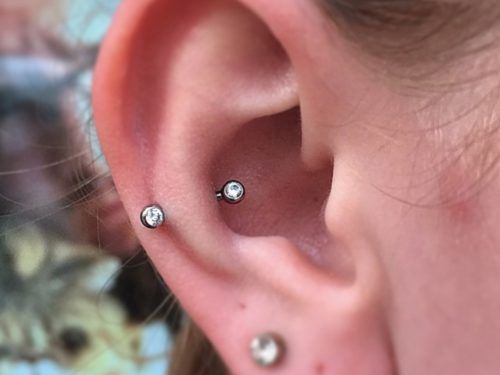
Anti-tragus
An anti tragus piercing is an ear piercing that is placed on the triangular cartilage ridge above the earlobe. If you gently pinch your earlobe, you’ll feel a triangular-shaped piece of cartilage sticking out above it. That’s the anti-tragus.
The anti-tragus is perfect for those who want to add some flair to their ear lobe piercings, or for anyone looking for a piercing that’s a bit off the beaten path.
Since the anti-tragus is a small area of the ear, it can be a difficult piercing to tackle. However, since it’s located above the lobe, which is very versatile, you can still get a similar look without piercing the anti-tragus itself.
Orbital
Orbital piercings are when you pierce two holes into your ear and connecting them with a hoop. It’s most often located on the earlobe, but can also be placed higher up in the middle of your outer ear. This piercing is a similar style to the industrial piercing, which also connects two holes with a bar in your upper cartilage.
These are one of the less painful piercings because they’re mostly done on the lower lobe, where the tissue is much softer and heals much quicker than cartilage.
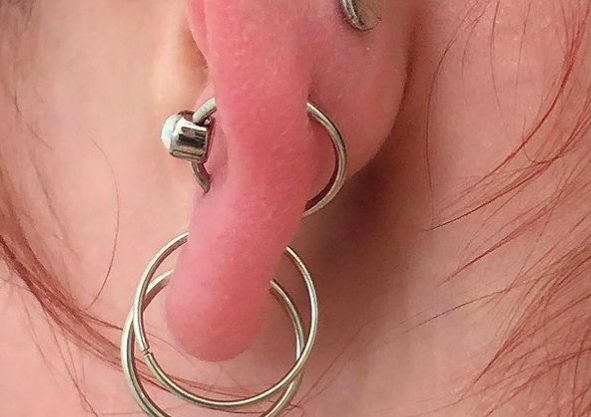
Auricle
An auricle piercing is an ear piercing that is placed on the outer rim of the ear, between the helix and the earlobe. Thankfully, the auricle piercing is one of the least painful ear piercings. The auricle cartilage is relatively thin, so this piercing will hurt less than most other cartilage piercings, but still a little more than a lobe piercing. Like the helix, the auricle presents a large canvas to work with. There’s a wide space available to puncture, so before you get your auricle pierced, you’ll want to think about where specifically you want your piercing placed.
If you are looking to ignite some creativity, the auricle piercing is a great option when it comes to choosing jewellery. From small cartilage hoops to flat back studs, conch pins, and barbells, your options are endless.
If you’re looking for some jewellery inspiration, why not take a look at our full collection? Whether you’re after a necklace or some diamond earrings, we’ve got you covered. We also have a vast range of engagement and wedding rings.
If you don’t see anything that takes your fancy, we also offer a bespoke service, where our designers will create a unique piece of jewellery that ticks all the boxes.
Follow us on our socials
Pop over to our social platforms to keep up to date with Steven Stone’s latest jewellery content and news.


